正则表达式预检查
名词
标题部分 名词以下都是预检查,类似于(?:)非捕获型分组,匹配到的内容不会被捕获
-
(?=pattern)Positive Lookahead Assert 正向肯定预检查 -
(?<=pattern)Positive Lookbehind Assert 反向肯定预检查 -
(?!pattern)Negative Lookahead Assert 正向否定预检查 -
(?<!pattern)Negative Lookbehind Assert 反向否定预检查
相关 API
标题部分 相关 API首先需要看一下 RegExp.prototype.exec()
这个正则对象上的方法。
如果你和我一样对 exec 执行结果中的 groups 对象为啥总是 undefined 感到疑问, 具体查看 MDN 上
RegExp.prototype.exec()
返回结果中 groups 字段的解释:
A null-prototype object of named capturing groups, whose keys are the names, and values are the capturing groups, or undefined if no named capturing groups were defined. See capturing groups for more information.
可以看到这个这里面只包含了 named capturing groups,也就是命名捕获型分组,而不是普通的捕获型分组。
冷知识:命名捕获型分组是 ES2018 引入的,所以在 ES2018 之前的版本中,groups 字段是 undefined 的。
以这个正则表达式为例 /(?<title>\w+), yes \k<title>/ 点击跳转 regex101 ,
可以看到 title 就是一个 named caputuring group。 而 \k<title> 则是一个 backreference。
举例说明
标题部分 举例说明1. 普通的捕获型正则
标题部分 1. 普通的捕获型正则/windows(95|NT|xp)/.exec("windows95OtherString");console:

regex101:
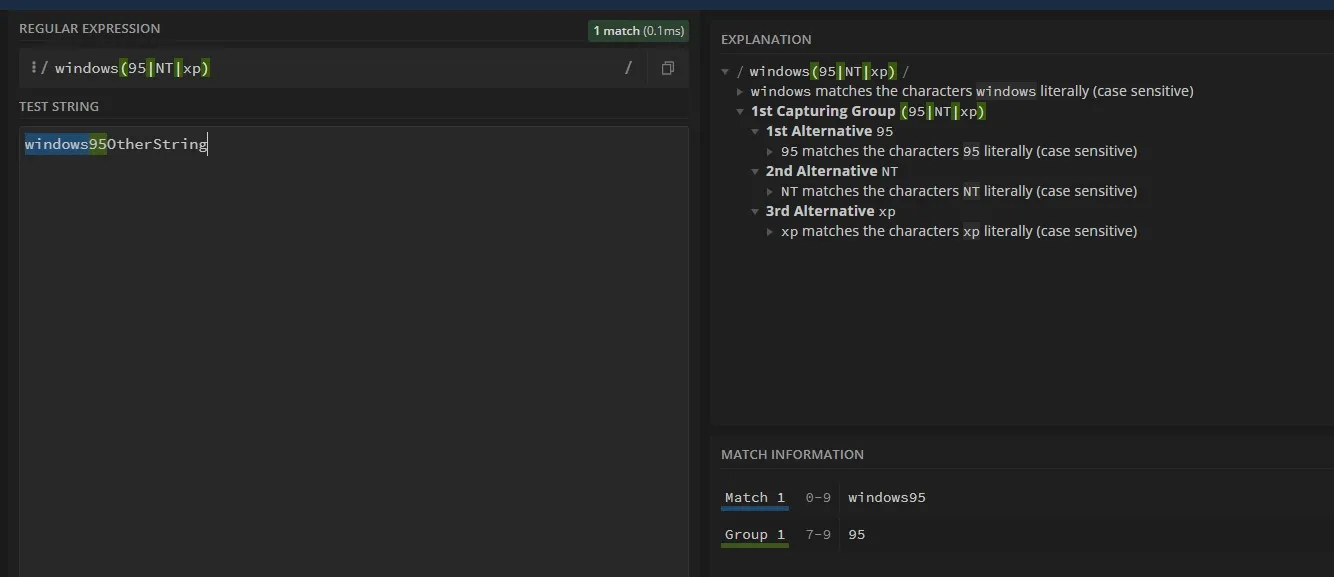
2. 正向肯定预检查 Postive Lookahead
标题部分 2. 正向肯定预检查 Postive Lookahead/windows(?=95|NT|xp)/.exec("windows95hahahah");console:

regex101:
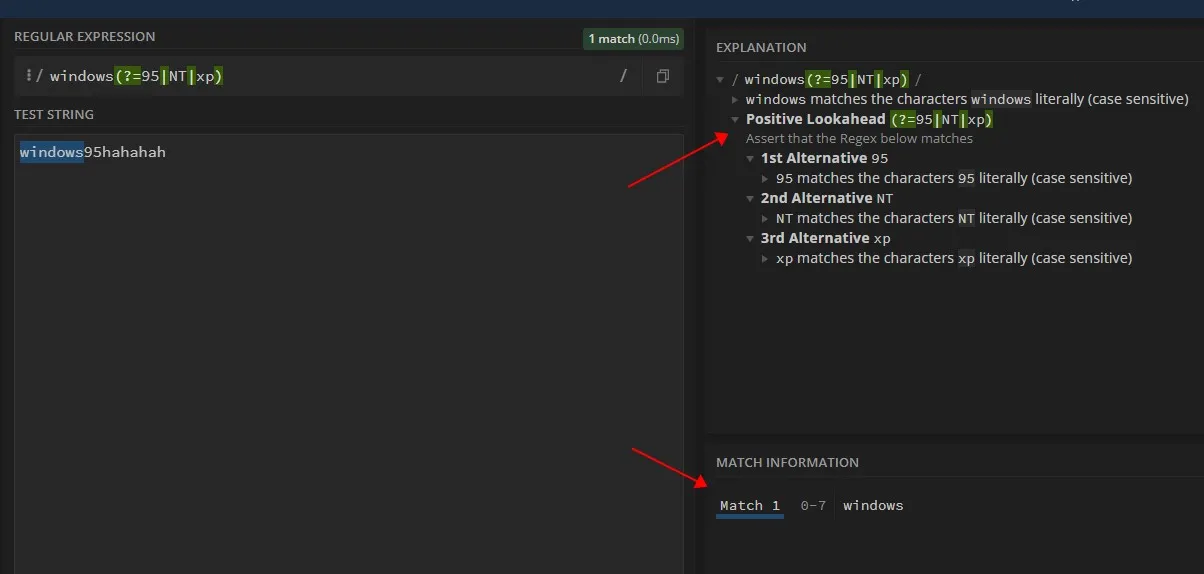
3. 反向肯定预检查 Positive Lookbehind
标题部分 3. 反向肯定预检查 Positive Lookbehind/(?<=95|NT|xp)windows/.exec("NTwindows");console:

regex101:
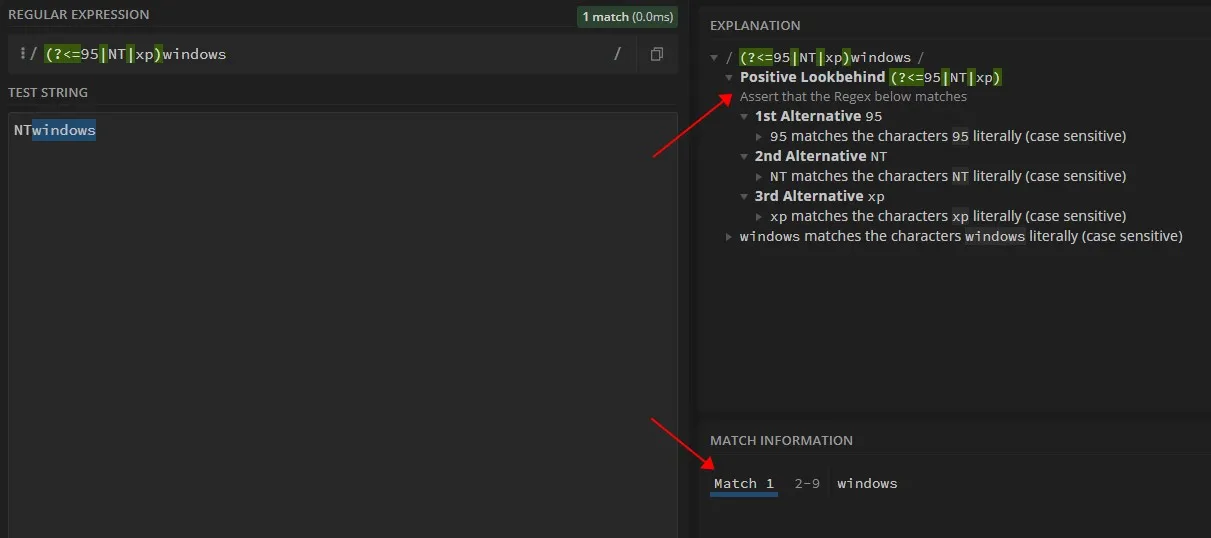
4. 正向否定预检查 Negative Lookahead
标题部分 4. 正向否定预检查 Negative Lookahead/windows(?!95|NT|xp)/.exec("windows10heihei");console:

regex101:
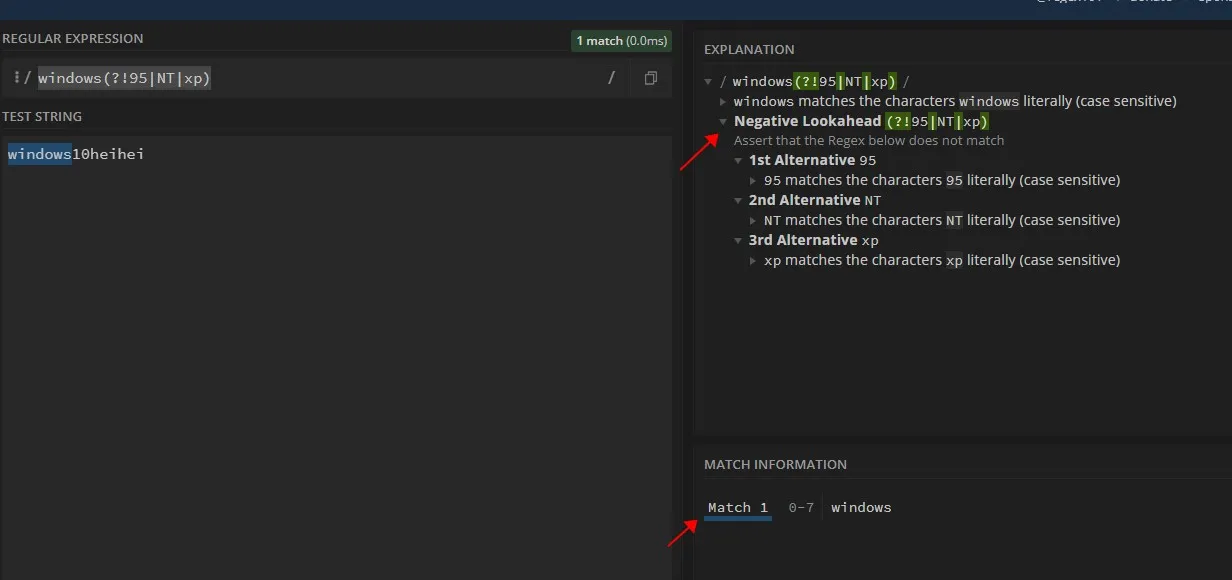
5. 反向否定预检查 Negative Lookbehind
标题部分 5. 反向否定预检查 Negative Lookbehind/(?<!95|NT|xp)windows/.exec("haha10windows");console:

regex101:
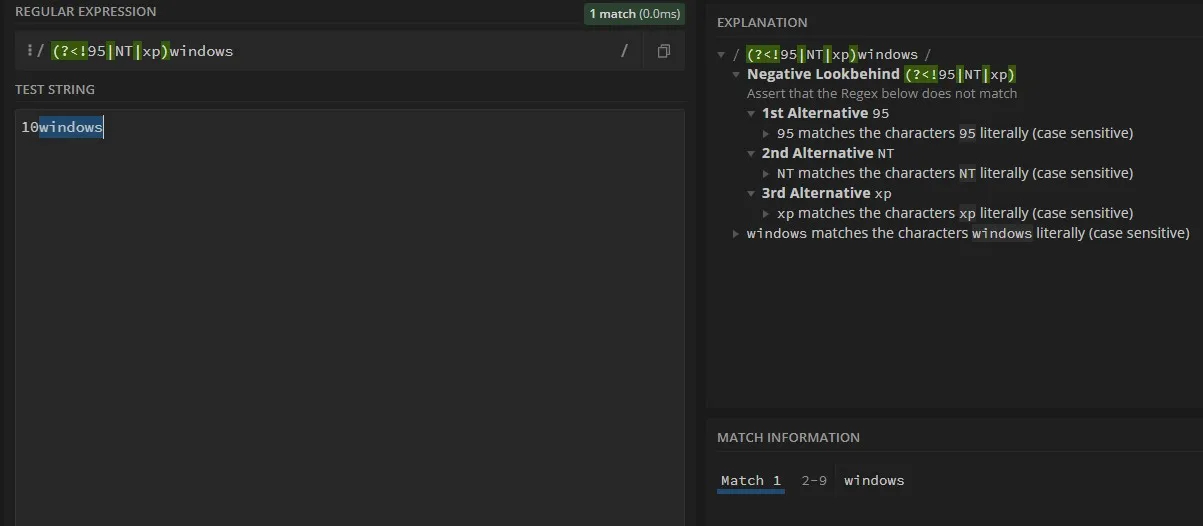
总结
标题部分 总结其中 ? 表示非捕获型匹配
以从左到右为正方向,lookahead 指的是 括号里面的正则 在 匹配字符串 前方。lookbehind 则表示 括号里面的正则 在 匹配字符串 后方,使用<来表示在后方。
Positive or Negative 分表表示 是 or 否 匹配括号里的正则。符号分别为 = 和 !
由于都是 non-capturing-group(非捕获型分组),所以结果匹配到的字符串,都不会包括括号里面的,即上面的例子中的 windows。
千位分隔符 Look Ahead Positive Assert
标题部分 千位分隔符 Look Ahead Positive Assert"12345678.32423432".replace(/(\d)(?=(\d{3})+\.)/g, "$1,");解释:
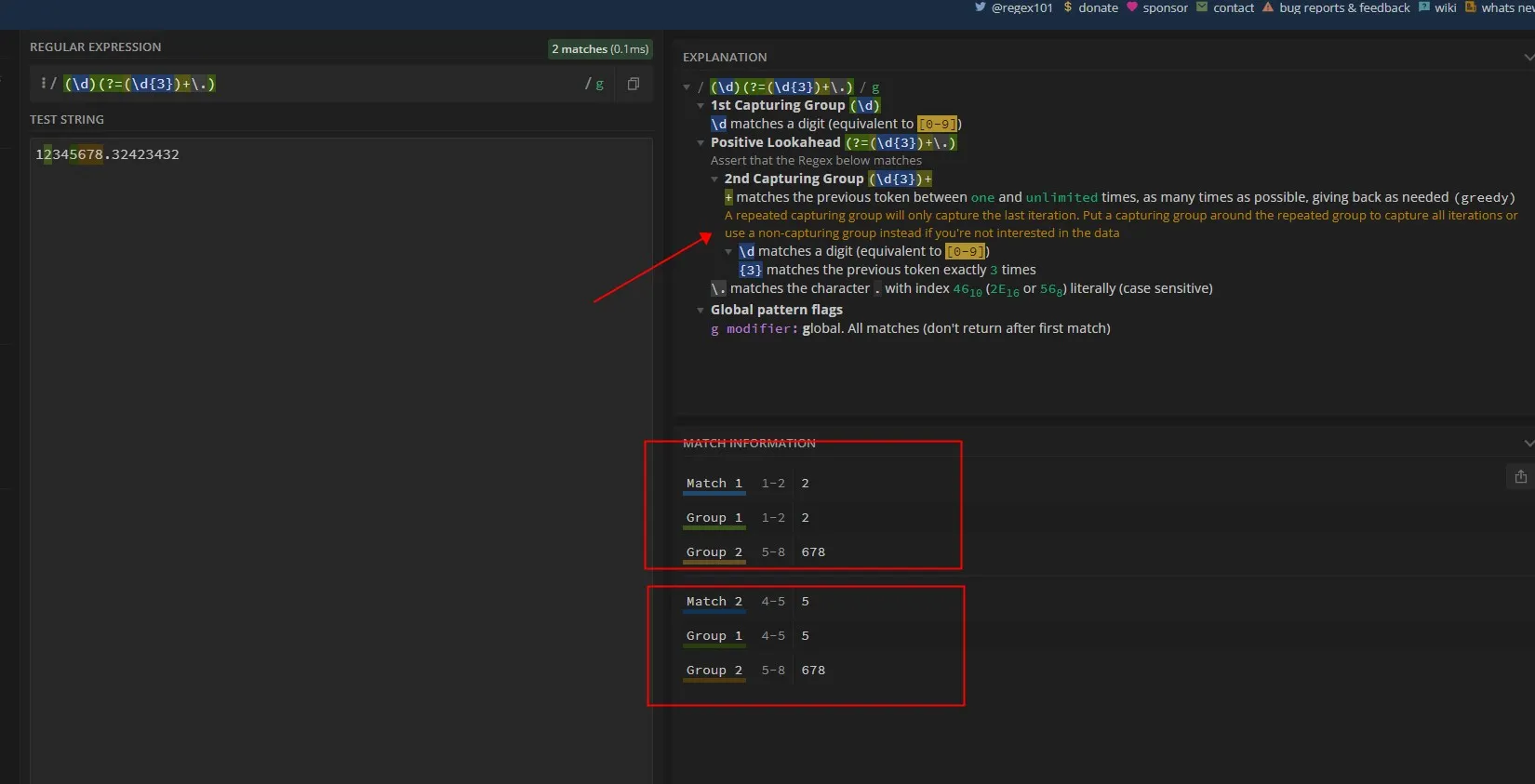
上面的千分位分隔正则表达式对没有小数点部分的字符串无效,更完整的可以使用如下的方法:
export function toThousands(num) { return num.toString().replace(/\d+/, (n) => { return n.replace(/\B(?=((\d{3})+\b))/g, ","); });}
toThousands(12345.489101);// 输出为 '12,345.489101'Copilot 做如下解释:
Here’s a breakdown of how it works:
-
num.toString(): This converts the input number to a string. This is necessary because thereplacemethod is a string method and doesn’t work directly on numbers. -
.replace(/\d+/, (n) => {...}): This uses a regular expression to match one or more digits in the string. For each match, it calls a function that takes the matched stringnas an argument and returns a new string. -
Inside the function,
n.replace(/\B(?=((\d{3})+\b))/g, ",")is used to add commas in the appropriate places.\Bmatches a position where the previous and next character are either both words or both non-words. This ensures we’re not at the beginning of the string.(?=((\d{3})+\b))is a positive lookahead that matches a group ahead in the string without including it in the result. It looks for one or more groups of three digits (\d{3}) that are not followed by a word boundary (\b). This effectively matches every group of three digits that are at the end of a larger group of digits./gis the global flag for the regular expression, which means the replacement will happen for all matches in the string, not just the first one.","is the replacement string, which will replace each match of the regular expression (i.e., each place where a comma should go).
So, if you call add_comma_every_thousand(1234567), the function will return the string "1,234,567". This function can be useful in a variety of applications where you need to display large numbers in a more readable format.
关于正向/反向更典型的举例
标题部分 关于正向/反向更典型的举例"hello world".replace(/(?=hello)/g, ",");// 输出为 ',hello world'
"hello world".replace(/(?<=hello)/g, ",");// 输出为 'hello, world'可以看到,(?=hello) 表示匹配 hello 前面的位置,而 (?<=hello) 表示匹配 hello 后面的位置,然后被 , 替换。